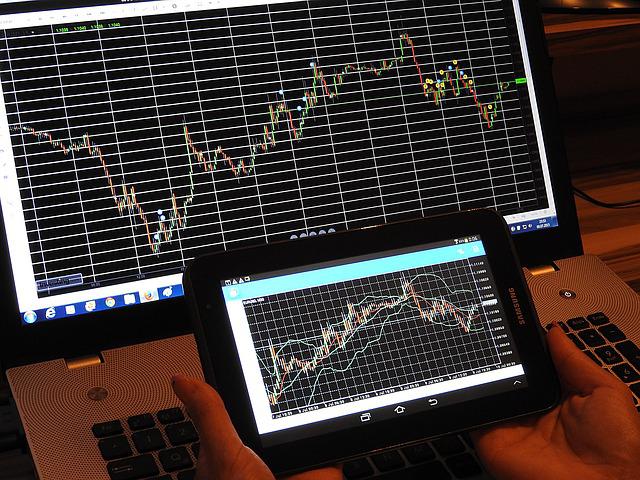To safeguard themselves against growing spreads, traders should abide by the best forex spread trading strategies discussed in this article.
The difference between the ask (sell) and bid (buy) prices is known as the forex spread. We’ll discuss some factors that might soon cause the spread to broaden or contract.
BEWARE OF A GROWING SPREAD
Traders should always consider the spread since it is the main expense associated with forex trading. Larger spreads increase the cost of trading.
A forex trader‘s career may end during volatile periods or when leverage. Remember that the spread cost will increase relative to your account equity as leverage is utilized. Thus, it is advantageous to use little to no leverage.
New traders should carefully watch out for the spread. The spread might widen, you could get a margin call, or your position might even be closed if you have a small account size and take a more prominent position than your account size.
The three spread trading methods and tactics listed below are excellent places to start learning the fundamentals so that your FX trading is successful: observing the spread-affecting variables, such as the currency pair’s liquidity and the time of day.

1) Pay attention to factors that influence the spread’s size.
Traders should be mindful of the following variables to prevent high-spread expenses linked to a growing spread:
- Volatility: Market turbulence brought on by the publication of economic data or a breaking news story might cause a spread to expand.
- Market liquidity: A spread may expand due to a lack of market liquidity. Volatility and liquidity are two related ideas. High spreads are typical with illiquid currency pairings, including developing market currencies. Volatility may also result from illiquid markets.
- Spreads and the news: Liquidity providers may widen their spreads before a well-known news event, such as the announcement of the NFP employment statistic, to reduce their exposure to the risk posed by the event.
Traders need to exercise patience and only engage in trading when the spread narrows since, in most cases, the spread will return to its mean within a few minutes.
2) Select high-liquidity currency pairs
Another popular forex spread trading technique is selecting forex pairings with high liquidity, especially for newcomers. Pairs with significant liquidity often have smaller spreads.
Because they trade in large quantities, your main currency pairings, like the EUR/USD (Euro Dollar), USD/JPY (Dollar Yen), GBP/USD (Pound Dollar), and USD/CHF (Dollar Swiss Franc), will have the lowest spreads.
These currencies only sometimes trade with tight spreads since they are impacted by news, liquidity, and volatility, which may cause spreads to expand.
In comparison to major currency pairings, emerging market currencies like the USD/MXN (US dollar/Mexican Peso), USD/ZAR (US dollar/South African Rand), or USD/RUB (US dollar/Russian Ruble) often have wider spreads. Trading these pairs with little leverage or no leverage at all is thus a sensible choice for investors.
The black boxes in the figure below illustrate the spread of several currencies. The USD/JPY and EUR/USD key market currency pairings have slim spreads of 0.7 and 0.6 pips, respectively.
On the other hand, the USD/ZAR and USD/RUB exchange rates for emerging market currencies have huge spreads of 90 pip and 1000 pip, respectively.

3) Day Trading Time
Consider the time of day when developing your strategy since it impacts forex spreads. Due to the vast amount of trading that occurs throughout the four main market trading sessions—London, New York, Sydney, and Tokyo—forex spreads are often at their lowest.
To benefit from lower spreads, forex traders might trade during specific periods. Spreads may become considerably smaller when the London and New York sessions coincide.
Eastern Time is used for the following times. The London and New York sessions coincide between 8 a.m. and 11 p.m. Eastern time.
Other variables might affect the optimum time of day to trade currencies.

EXAMPLE OF FOREX SPREAD TRADING USING USD/JPY
Combining the spread above trading strategies will lower the risk of trading with a high spread. Because the spread may alter between the time you start the position and the time you wish to close it, it is crucial to keep these procedures in mind while executing trades and closing them.
We’ll choose the USD/JPY as a primary example since it is one of the leading currency pairings, which means it has excellent liquidity and, as a result, extremely low spreads compared to other forex pairs.
Watch for elements that could have an impact on the spread.
Ensure no shock events or data releases might impact the spread before trading the USD/JPY. Utilizing an economic calendar and staying current with the news are two ways you may do this.
Below is an example from the economic calendar. It is advisable to trade around events with a “high impact” since they are more likely to raise the spread unless you are trading the news event itself.
Events like the following might make volatility and the spread more volatile:
- GDP updates
- CPI (inflation statistics)
- NFP (non-farm payrolls)
Consider the time of day trading.
We also need to consider volatility when trading the USD/JPY. When the London and New York sessions overlap, between 8 and 11 a.m. eastern time, it is one of the most liquid periods to trade forex. Also quite liquid during the Tokyo session is the USD/JPY.
Emerging market currencies may have vast spreads when trading outside their regular market hours. When trading currencies from developing markets, it is advisable to do it during the most liquid trading hours.


